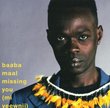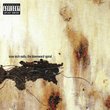| All Artists: Alfred Schnittke, Neeme Jarvi, Gothenburg Symphony Orchestra Title: Alfred Schnittke: Concerto Grosso No. 4 - Symphony No. 5 / Pianissimo for Large Orchestra Members Wishing: 1 Total Copies: 0 Label: Bis Release Date: 9/26/1994 Album Type: Import Genre: Classical Styles: Forms & Genres, Concertos, Historical Periods, Modern, 20th, & 21st Century, Symphonies Number of Discs: 1 SwapaCD Credits: 1 UPCs: 750582024122, 7318590004272 |
Search - Alfred Schnittke, Neeme Jarvi, Gothenburg Symphony Orchestra :: Alfred Schnittke: Concerto Grosso No. 4 - Symphony No. 5 / Pianissimo for Large Orchestra
CD DetailsSimilarly Requested CDs
|
CD ReviewsHarrowing and Brilliant! C. Symonds | Sydney, NSW Australia | 07/18/2005 (5 out of 5 stars) "Often named as Schnittke's symphonic masterpiece, 'Concerto Grosso no. 4- Symphony no. 5' (1988) is indeed a formidable work, tackling head-on the challenges faced by composers in the late twentieth century attempting the Symphonic form. The first half of the work is the Concerto Grosso and moves from a cacophonous parody of the Baroque (like the 2nd movement of the 1st symphony)to a 'completion' of the 16-year old Gustav Mahler's unfinished scherzo for a Piano Quartet. The movement ends remarkably, with the exact Mahler quote emerging from the destructive crash of a Tam-tam. However, it is the 3rd and 4th movements (the 'Symphony' part) that carry most of the emotional weight. The 3rd again carries on the Mahlerian spirit, taking the cataclysms that end Mahler's 6th and stretching their effect to the extreme. It is very violent, dissonant and everything we've come to expect from 80's Schnittke. The polystylisms of the 1st two movements are largely absent, Schnittke concentrating on writing a truly symphonic Allegro. After this comes a heavy, tortured funeral march, shot through with reminiscenses of all the other movements until collapsing on itself in an enormous climax. This is truly one of the greatest late twentieth-century orchestral works. "...Pianissimo..." (1968) is an interesting experiment in pitch but does not develop its material sufficiently to make it a truly great work. The performances by Jarvi and the Gothenborg Symphony are just stunning, special mention must go to the brass section who just keep getting louder and louder in the 3rd movement, with no loss of sound quality. I would however love to hear Chailly's interpretaion (he was the dedicatee of the Symphony) Very highly recommended to all Schnittke fans and lovers of twentieth century music." Two unusual pieces by the versatile Russian composer Christopher Culver | 06/12/2007 (4 out of 5 stars) "This BIS disc, part of their praiseworthy attempt to issue Schnittke's complete works, contains two pieces by the great Russian composer written twenty years apart. The first is an unusual work of his 1980s maturity, while the other shows the composer in transition in the 1960s.
The first work is the oddly-titled Symphony No. 5 / Concerto Grosso No. 4. That's right, it's one piece that serves to fill in an entry in both Schnittke's line of concerti grossi and his series of symphonies. The first two movements serve as the Concerto Grosso No. 4, and like the first three it has Baroque inspiration at its heart. Violin, oboe, and harpischord share the spotlight in what begins as innocuous as a Brandenburg Concerto and then becomes increasingly hysterical. But the second movement shows a transformation, where the violin is now on his own in downright Romantic writing, which features Schnittke's take on the fragments of Mahler's early and unfinished piano quartet. Strikingly, the movement ends with the extant Mahler material played verbatim pianissimo at the back of the orchestra. The latter two movements of this gryphon of a piece form the Symphony No. 5. The writing continues the Mahlerian spirit, getting more and more epic. March-like cadences appear again and again: there seems to be some sort of struggle or conflict going on. But while the CG portion of the piece harkens back to usual polystylistic Schnittke, the Symphony is pure late Schnittke (post-1985, when he had his first stroke). That means that conflict is remarkably subtle, and the ending of the piece can seem ambiguous. While I find each half of the whole immensely well-written, putting them together seems awfully like spot-welding. "Pianissimo" (1968) is a weird piece. Not only is much of it written at the dynamic its title suggests, but the musical material is filled with eerie sounds reminiscent of Ligeti's micropolyphony or Langaard's "The Music of the Spheres". There's supposedly a programmatic basis here, from Kafka's "The Penal Colony", but to this listener it is hardly explicit. Well, as entertaining as the piece is, one can't help feel that the composer, still in something of his youth, is uncertain about what he's doing. Because the first piece on the disc, the Concerto Grosso No 4. / Symphony No. 5 is a neither-fish-nor-fowl work combining--perhaps unsuccessfully--two different sides of Schnittke, and because the second was written before his sure maturity, this disc would probably make a poor introduction to the composer. For that I'd recommend two excellent Moscow Studio Archives discs, the first containing the Concerto Grosso No. 2 and Viola Concerto and the second the Concerto Grosso No. 1 and Cello Concerto. Nonetheless, as I begin collecting the BIS and Chandos editions of Schnittke's works, I'm never disappointed, and this disc should indeed find a place in your collection if you like the composer." |

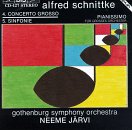
 Track Listings (5) - Disc #1
Track Listings (5) - Disc #1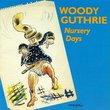
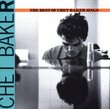
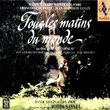
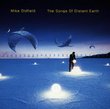

![Seussical [2000 Original Broadway Cast]](https://nationalbookswap.com/cd//m/02/4802/514802.jpg)
